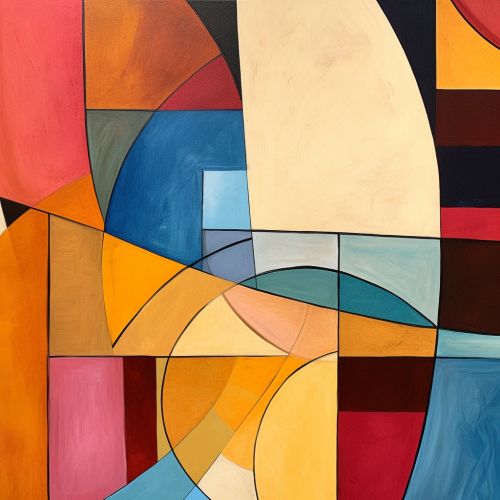Elements of Art
Introduction
The elements of art are the fundamental concepts and tools that artists use to create visual artwork. These elements, which include line, shape, form, space, texture, value, and color, serve as the building blocks of art, much like atoms in the physical world. Understanding these elements and how they interact is crucial for both creating and interpreting art.


Line
A line in art is a mark made by a moving point. It can be thick or thin, smooth or rough, continuous or broken, and can convey different emotions and ideas. Lines can be used to define space, contours and outlines, or to suggest mass and volume. They can also be used to direct the viewer's eye around the composition.
Shape
Shape in art refers to the enclosed space that is the result of lines, colors, or textures. Shapes can be geometric (such as squares, circles, and triangles) or organic (such as the shape of a puddle, leaf, or boomerang). Artists use shapes to create patterns, design, and structure in their work.
Form
Form in art refers to the three-dimensional quality of an object, which includes its length, width, and depth. Forms can be geometric or organic and can be viewed from many angles. Artists use light and shadows to create the illusion of form in two-dimensional artwork.
Space
Space in art refers to the distance or area between, around, above, below, or within elements. It can be positive (white or light) or negative (black or dark), open or closed, shallow or deep, and two-dimensional or three-dimensional. Artists manipulate space in their work to create the illusion of depth and to enhance the composition.
Texture
Texture in art refers to the perceived surface quality of an artwork. It can be actual (felt with touch) or implied (suggested by the way an artist has painted certain areas of a picture). Artists use texture to add depth, interest, or balance to their work.
Value
Value in art refers to the lightness or darkness of colors. It is used to create a sense of space and form in artworks. Artists use value to add depth, mood, and visual interest to their work.
Color
Color in art refers to the hue, value, and saturation of an object. It can create mood, define form, create spatial illusions, and attract attention. Artists use color theory to explore color relationships and combinations.
Conclusion
Understanding the elements of art can enhance one's ability to understand and appreciate art. They are the basic building blocks that artists use to create their work, and they provide a common language for discussing visual art.
